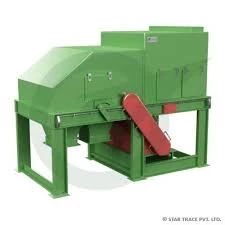

Samh . 24, 2024 19:57 Back to list
The Importance of Aluminium Scrap Recycling Plants
Aluminium is one of the most widely used metals in various industries, ranging from aerospace to construction. Its lightweight nature, durability, and resistance to corrosion make it an ideal choice for a multitude of applications. However, the extraction and processing of aluminium from bauxite ore is an energy-intensive process that contributes significantly to environmental degradation. To mitigate these impacts, aluminium scrap recycling plants play a crucial role in the sustainable management of aluminium resources.
The Recycling Process
The process of recycling aluminium begins with the collection of scrap, which can originate from a variety of sources, including old vehicles, buildings, and packaging materials. Once collected, the scrap is sorted into different grades based on its quality and composition. This sorting is a vital step, as it ensures that the recycling process is efficient and the quality of the recycled aluminium is high.
After sorting, the scrap is cleaned to remove any impurities, such as paint or other contaminants. This is typically done through mechanical processes and the use of chemicals. Once cleaned, the aluminium scrap is shredded into smaller pieces, making it easier to process. These shredded pieces are then melted in a furnace, where temperatures can reach over 700 degrees Celsius.
The melting process is what makes aluminium recycling particularly advantageous from an environmental standpoint. Unlike the primary production of aluminium, which can emit significant amounts of greenhouse gases and requires vast amounts of energy, the recycling of aluminium uses only about 5% of the energy required for primary production. This energy efficiency makes recycling a vital component in the transition towards a more sustainable future.
Environmental Benefits
Recycling aluminium substantially reduces the amount of waste that ends up in landfills. Aluminium is a non-biodegradable material, meaning that once it is discarded, it can remain in the environment for centuries. By recycling, we can significantly limit the volume of waste, conserving resources and reducing pollution.
Furthermore, aluminium recycling decreases the need for mining additional bauxite. The extraction process of bauxite mining is not only energy-intensive but also damages ecosystems, contributes to deforestation, and disrupts local communities. By recycling scrap aluminium, we can reduce the demand for new raw materials, thus safeguarding our environment.

Economic Impact
In addition to environmental benefits, aluminium recycling plants also have a positive economic impact. They provide jobs in various sectors, including collection, processing, and manufacturing. As global demand for recycled aluminium continues to rise, more investment in aluminium recycling facilities can lead to a surge in employment opportunities.
Moreover, recycled aluminium has a lower market price compared to primary aluminium, making it an attractive option for manufacturers. Businesses that utilize recycled materials can reduce their overhead costs and, in some cases, pass on these savings to consumers. This creates a win-win situation for both the economy and the environment.
Challenges and Innovations
While aluminium scrap recycling plants are essential for sustainable resource management, the industry does face challenges. One significant issue is contamination; when non-aluminium materials are mixed with aluminium scrap, it can complicate the recycling process and degrade the quality of the final product.
However, advancements in technology are helping to overcome these challenges. Innovative sorting technologies, such as automated systems equipped with sensors, are making it easier to separate aluminium from other materials. Additionally, research is being conducted on new methods of recycling that could further improve efficiency and reduce energy consumption.
Conclusion
Aluminium scrap recycling plants are not just facilities; they represent an essential component of a sustainable future. By recycling aluminium, we can conserve energy, reduce waste, protect the environment, and support the economy. As we move forward, continued investment in recycling technologies and practices will be central to addressing the challenges posed by aluminium production and consumption. The future of aluminium recycling looks promising, and with collective efforts, we can ensure a more sustainable and resource-efficient world.
Latest news
Troubleshooting Common Eddy Separator Problems
NewsJul.04,2025
The Role of Metal Recycling Plants in Circular Economy
NewsJul.04,2025
The Impact of Recycling Line Pickers on Waste Management Costs
NewsJul.04,2025
Safety Features Every Metal Shredder Should Have
NewsJul.04,2025
How Industrial Shredders Improve Waste Management Systems
NewsJul.04,2025
How Cable Granulators Contribute to Sustainable Recycling
NewsJul.04,2025